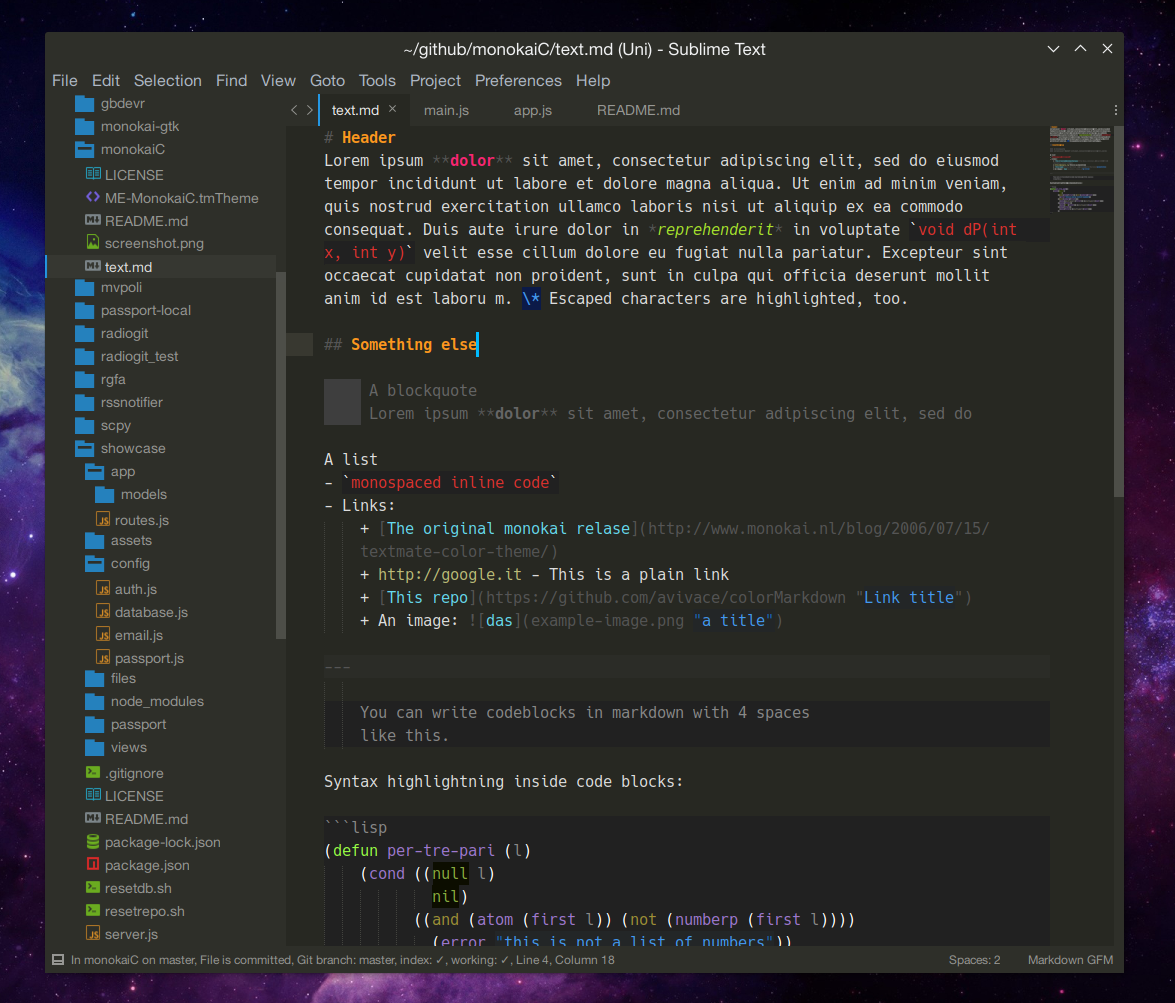## Blockquotes Markdown is a lightweight markup language with plain-text-formatting syntax, created in 2004 by John Gruber with Aaron Swartz. Markdown is often used to format readme files, for writing messages in online discussion forums, and to create rich text using a plain text editor.
- Readme.md Syntax Code
- Readme.md Syntax New Line
- Readme.md Syntax Example
- Readme Markdown Syntax Example

Markdown is a lightweight and easy-to-use syntax for styling all forms of writing on the GitHub platform.
What you will learn:

- How the Markdown format makes styled collaborative editing easy
- How Markdown differs from traditional formatting approaches
- How to use Markdown to format text
- How to leverage GitHub’s automatic Markdown rendering
- How to apply GitHub’s unique Markdown extensions
What is Markdown?
Oct 07, 2020 Markdown Cheatsheet for Github Readme.md. Contribute to tchapi/markdown-cheatsheet development by creating an account on GitHub. The basic syntax outlined in John Gruber’s original design document added many of the elements needed on a day-to-day basis, but it wasn’t enough for some people. That’s where extended syntax comes in. Several individuals and organizations took it upon themselves to extend the basic syntax by adding additional elements like tables, code blocks, syntax highlighting, URL auto. While the space is technically required in most standard Markdown implementations, some processors allow for a compact notation as well. ReadMe supports this style, so writing this ###A Valid Heading Lorem ipsum dolor etc. Compact headings must be followed. Ignoring Markdown formatting. You can tell GitHub to ignore (or escape) Markdown formatting by using before the Markdown character. Let's rename.our-new-project. to.our-old-project. For more information, see Daring Fireball's 'Markdown Syntax.' Further reading. GitHub Flavored Markdown Spec 'About writing and formatting on GitHub'.
Markdown is a way to style text on the web. You control the display of the document; formatting words as bold or italic, adding images, and creating lists are just a few of the things we can do with Markdown. Mostly, Markdown is just regular text with a few non-alphabetic characters thrown in, like # or *.
You can use Markdown most places around GitHub:
- Comments in Issues and Pull Requests
- Files with the
.mdor.markdownextension
For more information, see “Writing on GitHub” in the GitHub Help.
Examples
Syntax guide
Here’s an overview of Markdown syntax that you can use anywhere on GitHub.com or in your own text files.
Headers
Emphasis
Lists
Unordered

Ordered

Images
Links
Blockquotes
Inline code
GitHub Flavored Markdown
GitHub.com uses its own version of the Markdown syntax that provides an additional set of useful features, many of which make it easier to work with content on GitHub.com.
Note that some features of GitHub Flavored Markdown are only available in the descriptions and comments of Issues and Pull Requests. These include @mentions as well as references to SHA-1 hashes, Issues, and Pull Requests. Task Lists are also available in Gist comments and in Gist Markdown files.
Syntax highlighting
Here’s an example of how you can use syntax highlighting with GitHub Flavored Markdown:
You can also simply indent your code by four spaces:
Here’s an example of Python code without syntax highlighting:
Task Lists

If you include a task list in the first comment of an Issue, you will get a handy progress indicator in your issue list. It also works in Pull Requests!
Tables
You can create tables by assembling a list of words and dividing them with hyphens - (for the first row), and then separating each column with a pipe |:
Would become:
| First Header | Second Header |
|---|---|
| Content from cell 1 | Content from cell 2 |
| Content in the first column | Content in the second column |
SHA references
Any reference to a commit’s SHA-1 hash will be automatically converted into a link to that commit on GitHub.
Issue references within a repository
Any number that refers to an Issue or Pull Request will be automatically converted into a link.
Username @mentions
Readme.md Syntax Code
Typing an @ symbol, followed by a username, will notify that person to come and view the comment. This is called an “@mention”, because you’re mentioning the individual. You can also @mention teams within an organization.
Readme.md Syntax New Line
Automatic linking for URLs
Any URL (like http://www.github.com/) will be automatically converted into a clickable link.
Strikethrough
Any word wrapped with two tildes (like ~~this~~) will appear crossed out.
Emoji
GitHub supports emoji!
Readme.md Syntax Example
To see a list of every image we support, check out the Emoji Cheat Sheet.
Readme Markdown Syntax Example
Last updated Jan 15, 2014
